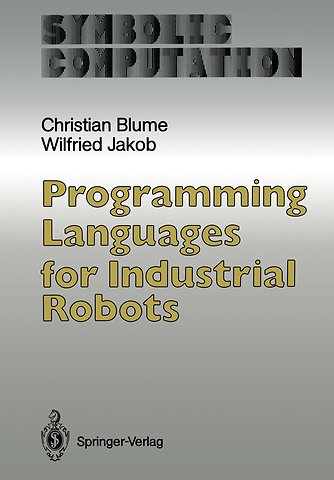Programming Languages for Industrial Robots
Paperback Engels 2011 9783642827471Samenvatting
Previous works on industrial robots dealt with "programming" and "programming languages" only in passing; no comparison was made between characteristics of the individual programming lan guages. This book, therefore, gives a detailed account of industrial robot programming and its environment. Mter introducing basic concepts special attention is paid to the language constructs relevant to robot programming. The features of various elements of the languages ex amined are compared. The languages are based on the following concepts: SRL - high-level programming language based on AL with PASCAL elements (University of Karlsruhe, F. R G. ) PASRO - integrated into PASCAL, based on the geometrical data types of SRL (I. I. -BIOMATIC Informatics Institute, Freiburg, F. RG. ) AL - derived from the high-level programming language ALGOL (Stanford University, U. S. A. , and University of Karls ruhe, F. RG. ) AML - high-level programming language, influenced by PL/1 (IBM, U. S. A. ) VAL - language specifically developed for robots (Unimation, U. S. A. ) HELP - mixture of high-level language elements and robot l- guage elements and real-time processing (DEA, Italy) SIGLA - a simple machine language (Olivetti, Italy) ROBEX - based on NC programming (Technical College (RWTH), Aachen, F. RG. ) RAIL - high-level programming language for industrial robots with elements for graphic processing (Automatix, U. S. A. ) IRDATA - general software interface between programming and robot controller (Association of German Engineers (VDI), F. R G.
Specificaties
Lezersrecensies
Inhoudsopgave
Rubrieken
- advisering
- algemeen management
- coaching en trainen
- communicatie en media
- economie
- financieel management
- inkoop en logistiek
- internet en social media
- it-management / ict
- juridisch
- leiderschap
- marketing
- mens en maatschappij
- non-profit
- ondernemen
- organisatiekunde
- personal finance
- personeelsmanagement
- persoonlijke effectiviteit
- projectmanagement
- psychologie
- reclame en verkoop
- strategisch management
- verandermanagement
- werk en loopbaan

